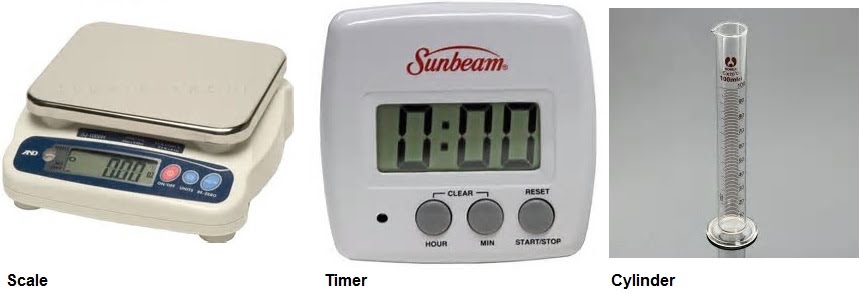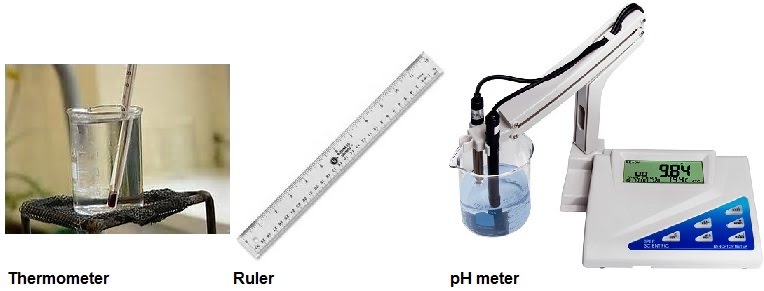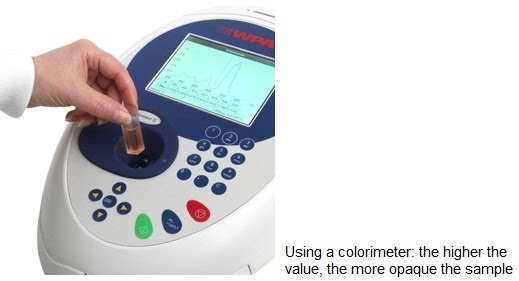Introduction
How various things can be measured
Spectrophotometer
Glassware
Serial dilution
Microscopes
Graticule
Qualitative tests
Chromatography
Electrophoresis
Introduction
The actual use of various instruments and equipment is part of your practicals. Oh wait, no. An experimental bench is about to be summoned onto your computer! This is going to be exciting!
…nope. Nope. Not yet, anyway. Maybe for a later virtual reality plugin.
Still, here are the outlines for the practical techniques listed in the spec.
Various basic properties can be measured using simple (enough) equipment. These are mass, time, volume, temperature, length and pH.

How various things can be measured
Mass can be measured using scales of various precision e.g. to the gram or to the milligram. Scales must be “zeroed” before weighing anything. Usually they start up at 0, but if they were used to measure something else they might be off. For example, if you need to measure something in a plastic tray (boat), you’d zero the scale with the boat on, and then add your substance. This enables the weighing of the substance without the weight of the boat.
Time can be measured using timers. These can count up, down, with intervals, etc.
Volume can be measured using cylinders, beakers, anything that is graded. Volume of water can also be measured by weight (1 l = 1 kg).
Temperature can be measured using thermometers. Some equipment such as electric heaters, centrifuges, fridges, freezers, autoclaves and shaker incubators have built-in thermometers that display temperature digitally.

Length can be measured using rulers, tapes or other graded tools.
pH can be measured using a pH meter. This is calibrated using an acid and a neutral or basic solution. Once calibrated, it will measure the pH of the solution that the tip of the meter is placed in. Often, the pH is adjusted at the same time by adding extra acid or base to reach the desired pH. The solution is kept moving through a magnetic stirrer to make sure the pH is even throughout.
Spectrophotometer
A colorimeter (spectrophotometer) can be used to quantitatively measure how much light of a specific wavelength can pass through a solution. This can be very accurate and measure the number of bacterial cells in a growth culture; protein or DNA concentration in a liquid sample; the progression of a chemical reaction that produces a colour change, etc.

Glassware
Glassware is used in the lab to hold things. This includes solutions, microorganisms, chemicals, etc. Glassware comes in many shapes and sizes. For example, cylinders are used to measure liquid volumes. Flasks are used to culture bacteria. Beakers are used to prepare solutions. A lot of “glassware” is actually made of plastic. This is especially the case with…
